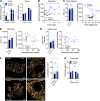β Cell Gαs signaling is critical for physiological and pharmacological enhancement of insulin secretion
- PMID: 40526441
- PMCID: PMC12352888
- DOI: 10.1172/JCI183741
β Cell Gαs signaling is critical for physiological and pharmacological enhancement of insulin secretion
Abstract
The incretin peptides glucose-dependent insulinotropic polypeptide and glucagon-like peptide-1 receptors coordinate β cell secretion that is proportional to nutrient intake. This effect permits consistent and restricted glucose excursions across a range of carbohydrate intake. The canonical signaling downstream of ligand-activated incretin receptors involves coupling to Gαs protein and generation of intracellular cAMP. However, recent reports have highlighted the importance of additional signaling nodes engaged by incretin receptors, including other G proteins and β-arrestin proteins. Here, the importance of Gαs signaling was tested in mice with conditional, postdevelopmental β cell deletion of Gnas (encoding Gαs) under physiological and pharmacological conditions. Deletion of Gαs/cAMP signaling induced immediate and profound hyperglycemia that responded minimally to incretin receptor agonists, a sulfonylurea, or bethanechol. While islet area and insulin content were not affected in Gnasβcell-/-, perifusion of isolated islets demonstrated impaired responses to glucose, incretins, acetylcholine, and IBMX In the absence of Gαs, incretin-stimulated insulin secretion was impaired but not absent, with some contribution from Gαq signaling. Collectively, these findings validate a central role for cAMP in mediating incretin signaling, but also demonstrate broad impairment of insulin secretion in the absence of Gαs that causes both fasting hyperglycemia and glucose intolerance.
Keywords: Diabetes; Endocrinology; G proteins; Insulin; Metabolism.
Conflict of interest statement
Figures






References
-
- Kahn SE. Beta cell failure: causes and consequences. Int J Clin Pract Suppl. 2001;123:13–18. - PubMed
MeSH terms
Substances
Grants and funding
LinkOut - more resources
Full Text Sources
Medical
Molecular Biology Databases

